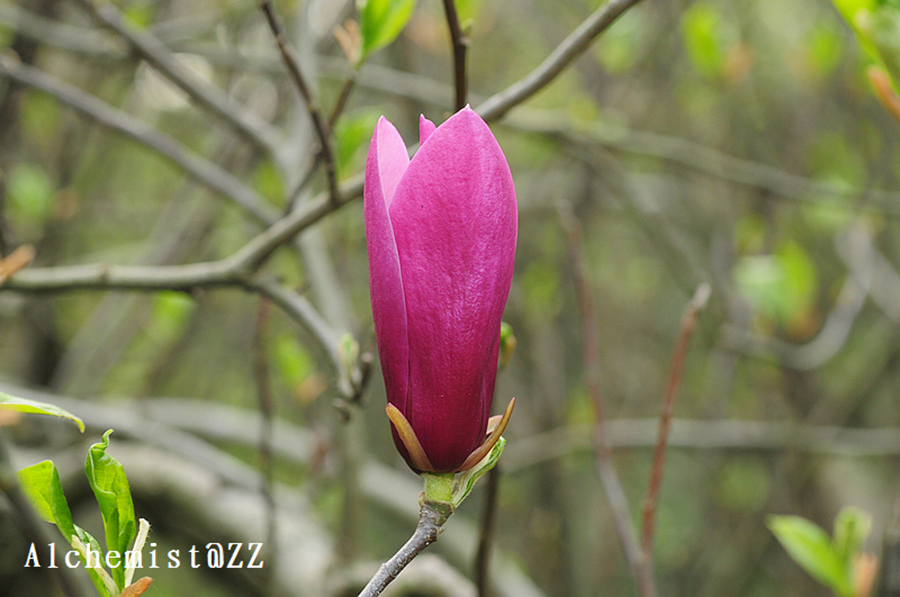- Scientific Name: Magnolia liliiflora Desr.
- Ref: J.B.A.M.de Lamarck, Encycl. 3:675. 1792
- Synonym: Yulania liliiflora
- English Common Name: purple magnolia, red magnolia, lily magnolia
- Chinese Common Name: 紫玉兰 zǐ∙yùlán, 辛夷 xīnyí
- Japanese Common Name: シモクレン [紫木蓮] shimokuren
- Family: Magnoliaceae
- Genus: Magnolia
- Distribution: Forest margins, slopes; 300-1600 m. Chongqing, Fujian, Hubei, S Shaanxi, Sichuan, NW Yunnan.
- Photo: 03/31/2013
Shrubs, to 3 m tall, usually caespitose. Bark grayish brown. Twigs greenish purple to pale purplish brown. Stipular scar ca. 1/2 as long as petiole. Petiole 0.8-2 cm; leaf blade elliptic-obovate to obovate, 8-18 × 3-10 cm, abaxially grayish green and pubescent along veins, adaxially deep green and sparsely pubescent when young, secondary veins 8-10 on each side of midvein, base gradually narrowing along petiole to stipular scar, apex acute to acuminate. Peduncle thick and strong, with trichomes. Flower buds ovoid, pale yellow sericeous. Flowers appearing at same time with leaves, vase-shaped, erect, slightly fragrant. Tepals 9-12; outer 3 tepals purplish green, sepal-like, lanceolate, 2-3.5 cm, caducous; tepals of inner 2 whorls purple to purplish red outside and whitish inside, petal-like, elliptic-obovate, 8-10 × 3-4.5 cm, fleshy. Stamens purplish red, 8-10 mm; connective exserted and forming a mucro; anthers ca. 7 mm, dehiscing laterally. Gynoecium pale purple, ca. 1.5 cm, glabrous. Fruit dark purplish brown, cylindric, 7-10 cm; mature carpels subglobose, apex shortly beaked. Fl. Mar-Apr, fr. Aug-Sep. 2n = 76*. (Flora of China)
